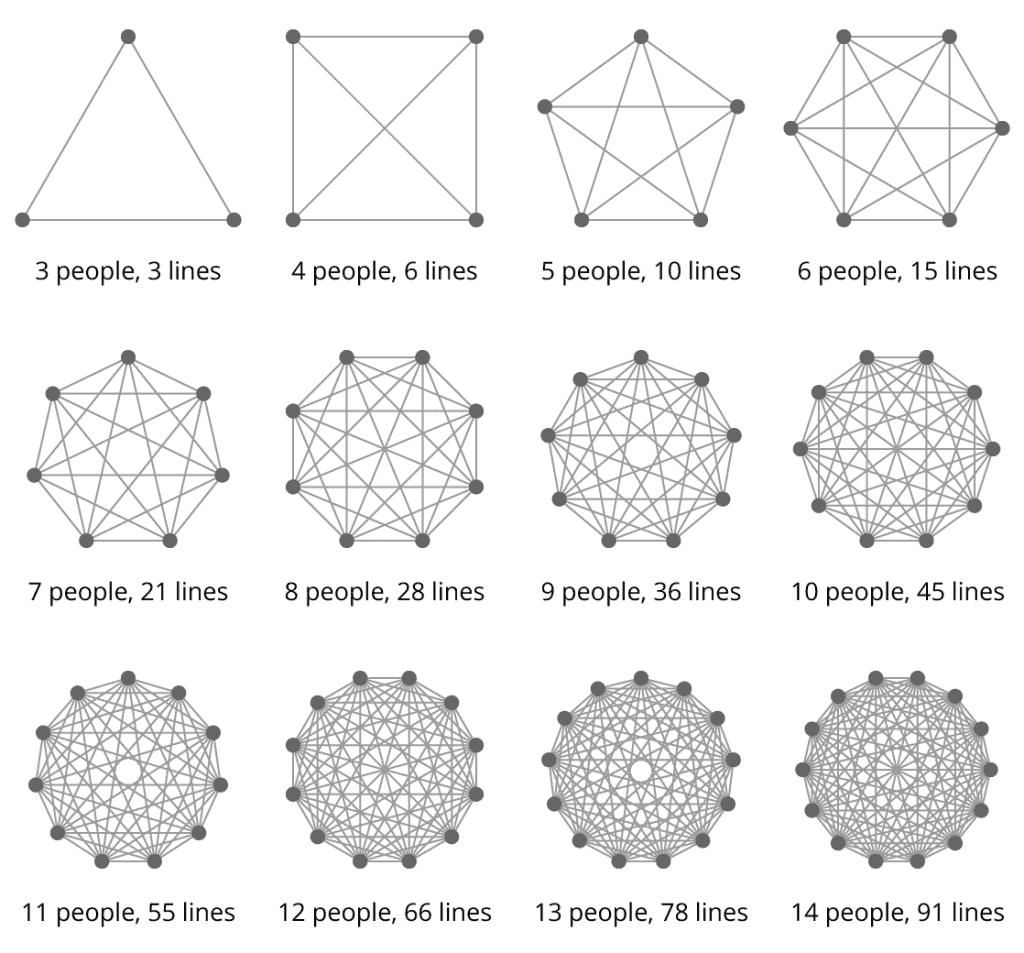Team Building by Numbers
Putting the right number of people on a work team is perhaps the most basic of steps towards ensuring efficiency and good decision-making. Yet so many managers get it wrong.
Teams are simply getting too big. For example, managers will often add people to a leadership team so that the individual is not offended by being left out. Being part of the executive leadership team is seen as a badge of honour, a reward for good performance. The reality is that not everybody needs to be there and it might be beneficial to do some pruning.
In my early career, in hospitality, I saw important decision-making meetings in which 17 people were squeezed around the table. The idea being that since the topic was important and crucial decisions needed to be made that everyone should have a say in the outcome. A lot of managers will do this because they believe it’s good for teamwork to include everyone. It makes each individual feel valued.
You can probably guess though what happened in that meeting. It descended into an argument. Was a decision made? Absolutely not.
It was one of those meetings which gives meetings a bad name. It was the reason why people hate meetings. If you asked everybody whether they wanted to be in that meeting, a lot of them would answer ‘no’.
What Happens When a Team Is Too Big?
A Harvard professor, Chris Argyris, put forward the idea that, within a team, individuals have to use both ‘advocacy’ and ‘inquiry’ during discussions. For me, as a Brit, he spelled the second word incorrectly but I won’t blame him for that – the concept is great. But from this point, for my own sanity, I’ll spell it as ‘enquiry’ – the correct spelling…
To define these terms, advocacy means to state one’s opinion directly while enquiry refers to asking questions of others to clarify their statements.
When a team is the right size, team members have the opportunity to make enquiries of one another. They ask questions in order to improve understanding. They listen to understand.
But when there are too many people in a team, there is no time to do that. Everyone wants to have their say and there are a lot of opinions to get through. People realise that if they want their opinion heard, they will have to take what little opportunity they have to speak directly and advocate for their position, not use their time clarifying someone else’s thoughts. It’s dog eat dog.
In smaller teams however, team members know that they will have plenty of time to share their own thoughts so are happier to explore other’s ideas as well. These teams engage in dialogue in which ideas are shared and explored rather than a debate in which each person strongly argues for their own side.
Too Many Cooks
We all know the phrase about there being too many cooks in the kitchen. Everyone has a different opinion and no decisions can be made.
The image below shows what happens when you start adding too many people to a team. Lines of communication increase exponentially. It’s chaos. There is simply no way that meaningful discussions can take place when you’ve got 10 to 20 people in a team, all trying to be heard.

(source: Lighthouse)
Striking a Balance for Ideal Team Size
A figure that is often thrown around is teams should be between 6 and 8 people. This makes sense. A team of this size will be big enough that it has a certain amount of energy and enthusiasm while at the same time allowing for each individual to have their say as well as make enquiries of others.
Jeff Bezos, the founder of Amazon, famously invented the ‘2 pizza rule’ which stated that no team meeting should be so big that two large pizzas could not feed everyone. In some cases, and if it was a smoked salmon and four cheese pizza, this might suggest that a team should not have more than 3 people…
Normally though, the 2 pizza rule would probably fit with the 6-8 person range mentioned above. Other numbers that have been mentioned in the literature are 3-9, less than 10, 5, 4-5, and 4.6.
It seems that, like many teams, academia can’t agree!
So, I’m going to make a bold quantifying statement. Work teams should be made up of 7 people. There, I said it.
No arguments.

